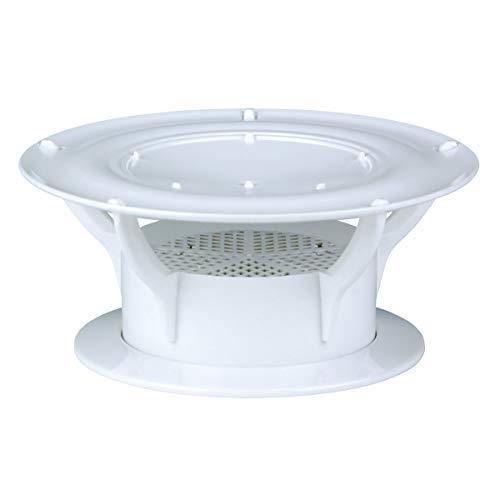Table of Contents Show
Despite what you might hear or see on social media, sometimes RVing stinks – literally. You may walk into your camper and discover it smelling like an outhouse. It can make it impossible to enjoy any adventure. So do you know how to keep an RV black tank from smelling? If not, today’s article is for you!
Today, we’ll teach you how to keep your RV black tank from smelling so you can avoid this disastrous situation.
Let’s get started!
What Is an RV Black Tank?
An RV black tank is a hard plastic holding tank that stores human waste and toilet paper from an RV’s toilet. The waste stays in the tank until the owner can properly dispose of it in a dump station or other sewer connection.
As you might expect, because of the contents of these tanks, there’s the potential for putrid smells.
The size of these tanks primarily depends on the RV. Smaller motorhomes and travel trailers can have black tanks as small as 15 to 30 gallons.
However, it’s not uncommon for large fifth wheels and massive motorhomes to have 60 to 100-gallon black tanks.
These tanks are typically located directly underneath toilets inside of an RV. If the camper has more than one toilet, there’s a good chance it will also have more than one black tank.
It’s essential to maintain and care for these tanks to avoid smells.
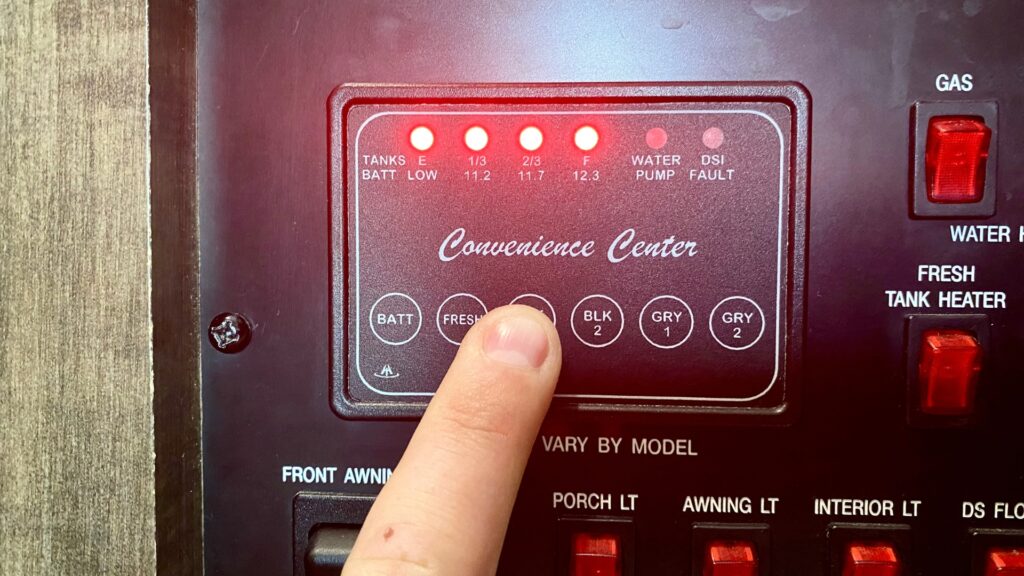
Why Does My RV’s Black Tank Stink So Bad?
If you’re experiencing a stinky black tank, you must know that you’re not the first RV owner to do so. While people may not always talk about it, it’s not uncommon.
You might be experiencing a strong and unpleasant odor from your RV’s black tank for several reasons.
One of the most common reasons is the buildup of waste and bacteria inside the tank. Over time, waste can accumulate on the walls and bottom of the tank, which creates an ideal environment for bacteria to grow. It doesn’t take long before foul odors enter your camper.
Another common reason for a stinky black tank is that the tank is not emptied correctly or cleaned regularly.
Waste begins to decompose as it sits in the black tank, which can lead to a strong and unpleasant smell. You don’t want waste to sit in your tanks longer than necessary.
Your RV’s odors could also result from a malfunctioning plumbing system. Venting issues can cause gasses inside the tank to escape into your home on wheels.
If this is the case, you can clean your tank as much as you want, but the odors will return as soon as you start filling your tank again.
Can I Put Bleach in My RV Black Water Tank?
While bleach may effectively kill odor-inducing bacteria, you should never use it in your black tank. If you do, you could cause serious damage to the rubber seals and plastic components over time.
Additionally, it’s important to know that not all bacteria in your black tank is bad. Some bacteria growing inside the tank is necessary to help with breaking down solids. You could cause worse odors by using bleach in your black tank.
More importantly, mixing bleach and urine can cause chlorine gas. This gas can cause coughing, runny eyes, and a runny nose. Avoid this mistake altogether by never using bleach.
Instead of using bleach, we recommend only using products specifically designed to clean and maintain your tanks.
There are a variety of cleaners, deodorizers, and enzyme-based treatments formulated to break down waste and eliminate odors without causing damage to the tank or its components.
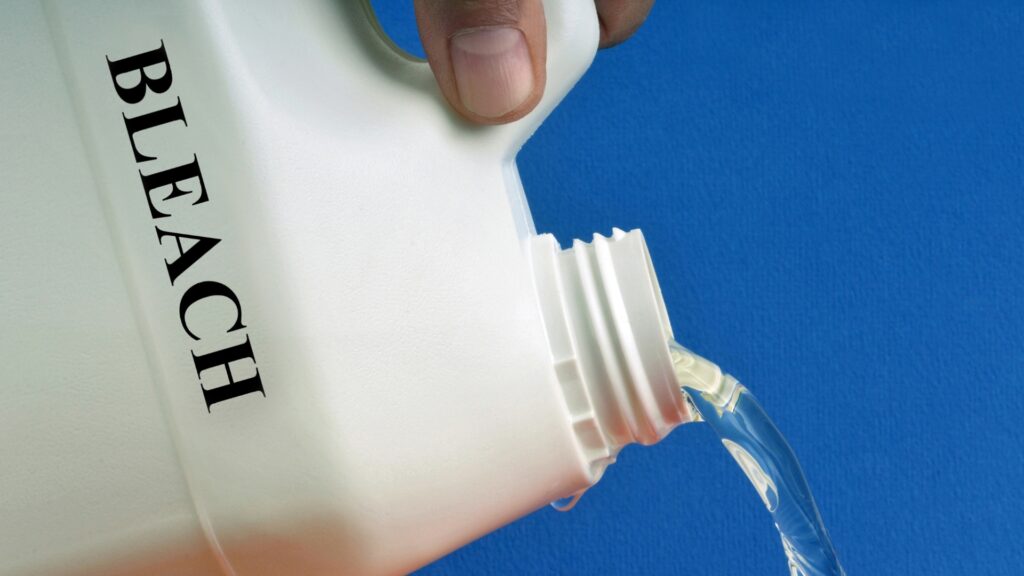
How Often Should I Flush My Black Tank?
Flushing your tanks is an essential maintenance task that you must do if you want to avoid a stinky RV. The frequency of flushing your tanks will depend on how often you use your RV.
It’s a good idea to rinse your tank after dumping your tanks, especially if it will be sitting in storage for more than a week or two.
However, those RVers who travel full-time in their rig may not need to flush their tanks every time they dump. This is because most of these individuals are dumping their tanks multiple times each week.
The waste won’t sit in their tanks for long. The combination of frequent dumplings and the use of enzyme-based treatments can help them avoid constant flushings.
If your rig starts to develop odors, increasing how often you are flushing the system is a good idea. Many newer rigs include dedicated water connections to make the process easy.
Pro Tip: Black tank valves endure a lot of wear and tear, which means they can get stuck. Here’s How to Fix Your Stuck RV Black Tank Valve!
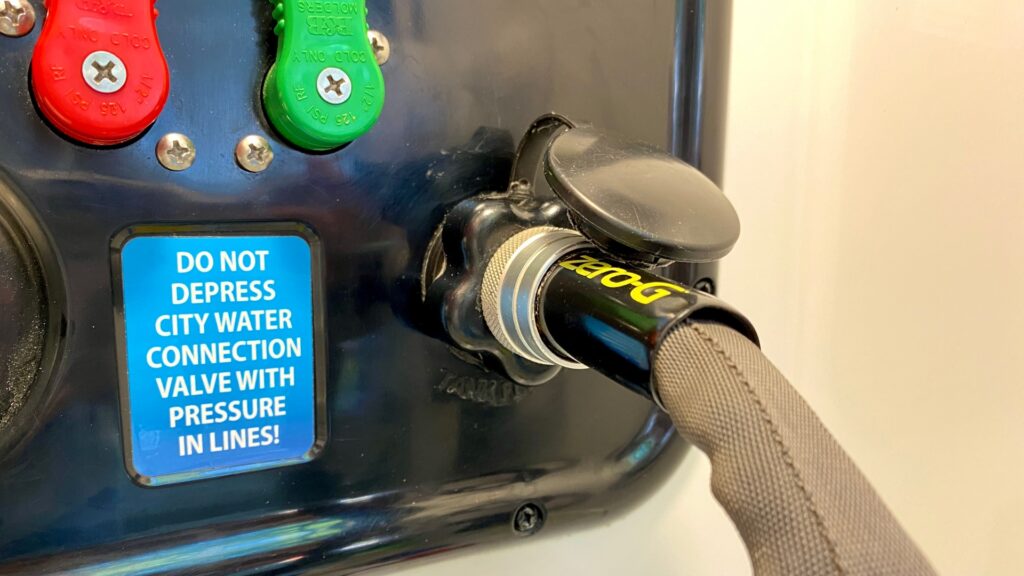
Tips to Keep Your RV Black Tank From Smelling
Nobody wants to have a stinky RV. We’ve compiled a list of our best tips to help you keep your black tank from smelling. Let’s take a look!
Keep Black Tank Valve Closed
One rookie mistake many owners make is leaving their black tank valve open when at a campsite with a sewer connection. Not only can this increase odors inside your RV, but it can also create a much larger situation – the dreaded “poop pyramid.”
A black tank requires a mixture of solids and liquids to function correctly. If you leave your black tank valve open, the liquids will quickly drain from your tank.
This results in solids piling up in a pyramid-like shape at the tank’s bottom. With no liquid in the tank, these solids can solidify even more and cause blockages.
If you catch it in time, there’s a chance you can fix this issue yourself. However, severe cases often require the assistance of a professional.
Trust us; save yourself the trouble and keep your black tank valves closed until you’re ready to dump your tanks.
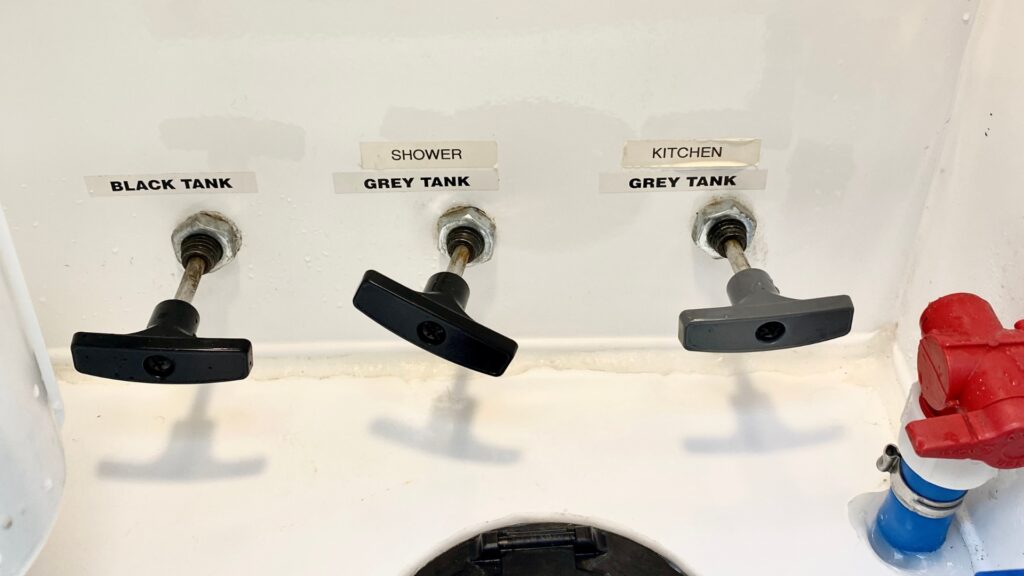
Use Plenty of Water
Water will be your best friend when it comes to your black tanks. You need to use plenty of water any time you’re flushing. This helps ensure you have plenty of liquids to help force solids out when dumping your tanks.
Unless you’re boondocking or have another reason to conserve water, always be generous with how much water you use when flushing the toilet.
However, while we encourage you to use plenty of water to protect your RV, there’s no need to be wasteful.
Use enough water to do the job, but don’t get carried away.
Get a High-Quality Tank Treatment
A high-quality tank treatment like Happy Camper, Camco’s RV Toilet Treatment, or Walex Porta-Pak RV Holding Tank Treatment can reduce odors. However, consistency is critical when using them. They won’t do any good if they sit in a cabinet and not in your black tank.
Whether you use your RV to travel full-time or recreationally on the weekends, use these products as a part of your regular cleaning routine.
You must stay on top of using tank treatments for them to be effective.
Dump Your Tanks Regularly
You don’t want waste to sit in your tank longer than necessary. This can cause odorous bacteria to grow and stink up your RV.
If you’re actively using your camper, depending on the size of your tank, it will likely only take a few days or a week of regular use to fill it.
It can become a problem when you leave waste in your tank for weeks or months at a time. This primarily occurs when owners store their rigs without planned future trips.
In general, if there is more than a week before your next trip, you’ll want to dump your tanks.
Pro Tip: If you will be dumping your tanks at a public dump station, make sure you Don’t Break These Unspoken RV Dump Station Rules!
Check the Tank Vent
You’ve likely seen the tank vent cap if you’ve ever climbed on top of your camper. This vent helps prevent gasses and odors from building up inside your tank.
If there’s a clog or blockage in this vent, the smells will look for the next best place to escape the tank.
Unfortunately, the next best route leads directly into your bathroom. When this occurs, it’s only a matter of time before your sense of smell will help you discover that there’s an issue.
You can upgrade or replace a tank vent that isn’t doing its job anymore. It’s actually quite easy and we highly recommend the Siphon 360. That’s what we upgraded ours to on the fifth wheel and it solved our stinky problem!
- ELIMINATES ODOR - Exhausts odors out the roof vent before they have a chance to invade your RV
- COMPATIBILITY - Engineered for a universal fit, the 360 Siphon is compatible with all RV vent caps
Check the Toilet Bowl Seal
If you look at the base of a toilet bowl, you should find a rubber seal. This seal helps close off the toilet bowl from the drainage pipe that leads directly into the black tank.
Unfortunately, these seals can dry out, crack, or get damaged as they age.
If you experience recurring odors from your toilet, put on a pair of rubber gloves and inspect this seal.
Replacing or lubricating this seal can be a dirty project, but it’s a fairly straightforward process that anyone with minimal DIY skills can complete.
- [VERSATILITY]: Thetford's RV Toilet Seal Lube & Conditioner works with all permanent or portable toilets found in RVs...
- [FUNCTIONALITY]: Penetrates the toilet seal, lubricating and protecting
Related: Do you have a septic system at home? Have you ever wondered Can You Dump Your RV Waste in a Septic Tank? Click to find out!
Flush Your Tanks Often
If you want to keep your RV black tank from smelling, make sure you’re flushing your tank often.
This is a relatively simple process and only requires you to fill the tank with clean water and dump it. You’ll repeat this process multiple times until the water drains clear and is free of any solid materials.
Many modern RVs have water connections that allow you to connect a standard-size water hose to fill your black tank with water.
We recommend using a designated clean-out water hose and not using your drinking water hose. It’s better to be safe than sorry!
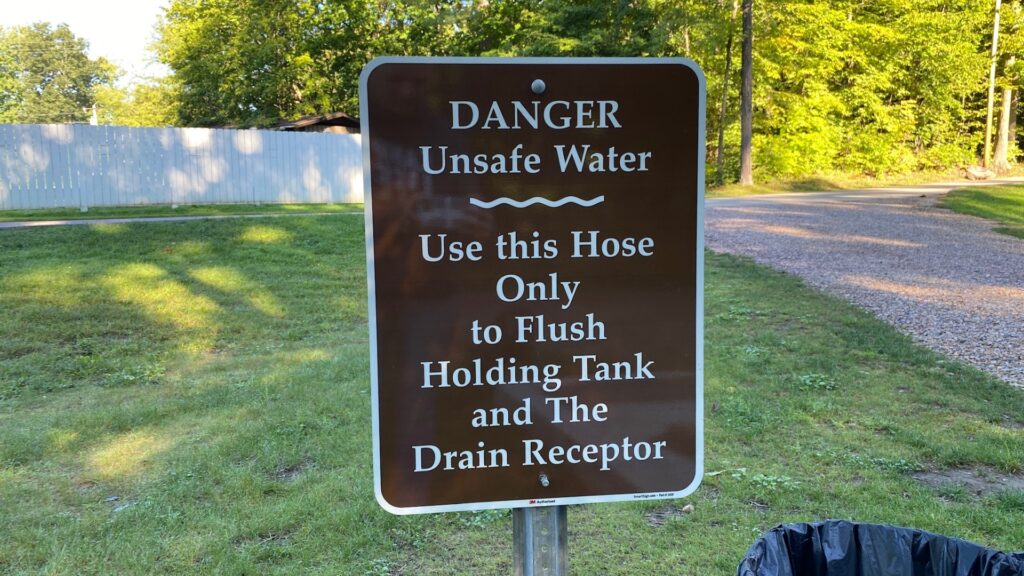
Next Up: Check out these 20 RV Sewer Accessories that Don’t Stink to make sure you have them all!
Know How to Keep Your RV Black Tank from Smelling
Keeping your RV black tank from smelling is essential RV maintenance. By following the tips we’ve shared with you today, you can prevent unpleasant odors and ensure the proper functioning of your RV’s waste system.
Regularly emptying and cleaning the black tank, using the right products, and maintaining the plumbing system can all help to keep your RV smelling fresh and clean.
Caring for your RV’s black tank allows you to enjoy a comfortable and odor-free RV experience.
Last update on 2024-11-21 / Affiliate links / Images from Amazon Product Advertising API





